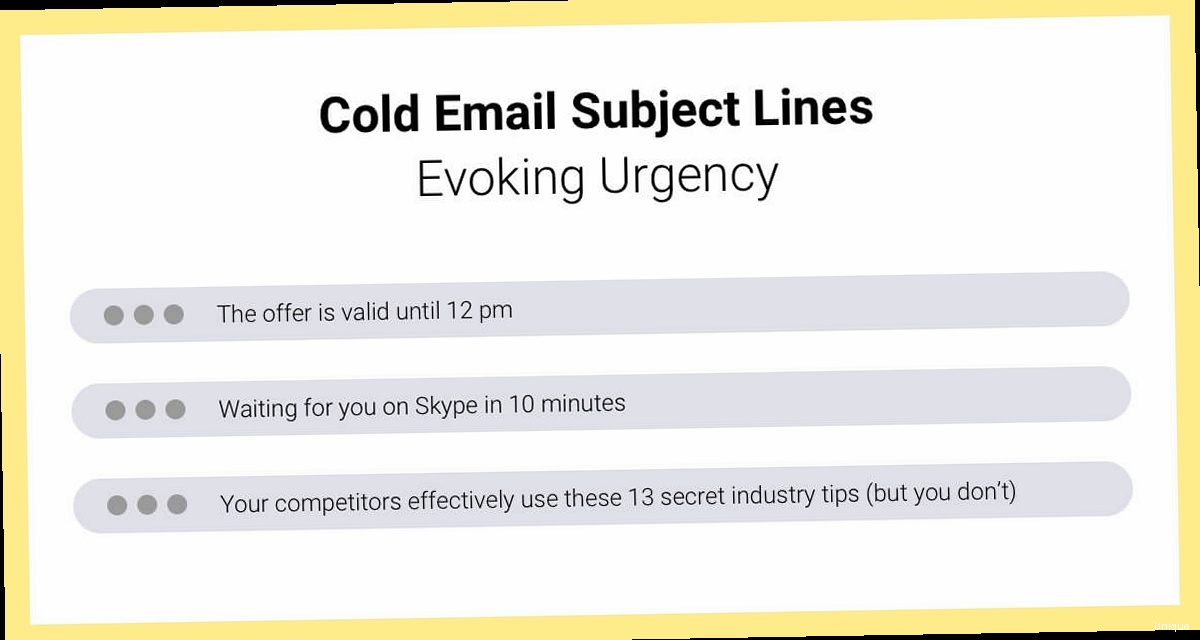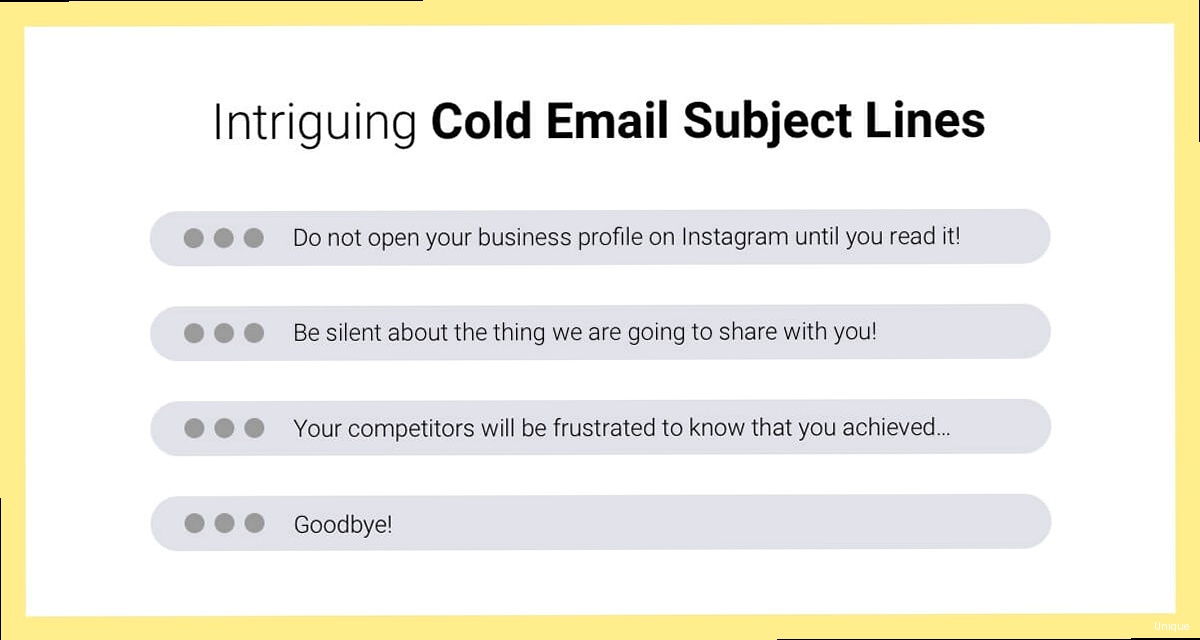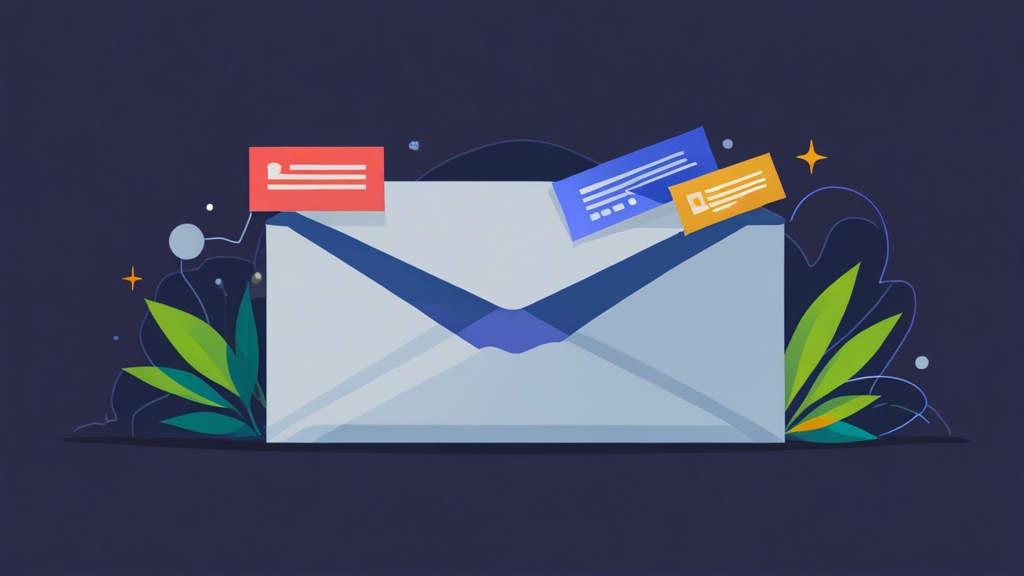Best Subject Lines for Cold Emails: A Technical Guide
Crafting the perfect cold email is a delicate art, and the subject line is your first, and often only, chance to grab your recipient’s attention. A compelling subject line can dramatically increase open rates, while a generic or poorly worded one will lead your email straight to the trash. This article provides a technical and practical guide to writing effective cold email subject lines, focusing on strategies, specific examples, and testing methodologies to optimize your outreach.
Table of Contents
- Personalization: The Key to Relevance
- Highlighting Value and Solving Problems
- Creating Curiosity and Intrigue
- Leveraging Urgency and Scarcity (Carefully)
- A/B Testing and Optimization
Personalization: The Key to Relevance

- Example 1: “Saw your post on [Topic] – Have a quick idea” – This shows you’re following their content and have something relevant to add.
- Example 2: “Re: [Company Name]’s recent growth – A potential synergy” – This highlights their success and positions you as a potential partner.
- Example 3: “Question about your work on [Specific Project]” – This demonstrates you’ve researched their role and responsibilities.
- Example 1: “Addressing [Company Name]’s [Specific Challenge]” – This shows you understand their pain points and have a potential solution. For example: “Addressing Acme Corp’s recent data security concerns”.
- Example 2: “Idea to improve [Company Name]’s [Specific Metric]” – This highlights a specific area where you can add value. For example: “Idea to improve Beta Ltd’s customer retention”.
- Example 3: “Question about [Company Name]’s marketing strategy” – This shows you’re interested in their business and have a relevant question. For example: “Question about Gamma Inc’s Q3 marketing strategy”.
- Example of what NOT to do: “Saw your vacation photos – Question about travel” – This is too personal and crosses a boundary.
- Better alternative: “Loved your recent talk on [Industry Topic] – Question about [Specific Point]” – This focuses on their professional expertise and shows you’ve done your research.
Highlighting Value and Solving Problems

- Example 1: “Double your website traffic in 3 months” – This is a bold claim, but if you can back it up, it will definitely get attention.
- Example 2: “Save 20 hours per week with our automation tool” – This highlights the time-saving benefits of your product.
- Example 3: “Reduce customer support costs by 15%” – This focuses on cost savings, which is always a key motivator.
- Example 1: “Struggling with low conversion rates? We can help” – This directly addresses a common marketing challenge.
- Example 2: “Overwhelmed by data breaches? Our security solution” – This targets a specific security concern.
- Example 3: “Need help with regulatory compliance? We’ve got you covered” – This addresses a potential legal challenge.
- Example of what NOT to do: “Leverage synergistic paradigm shifts for optimal ROI” – This is too vague and jargon-heavy.
- Better alternative: “Increase your sales by 20% with our proven strategies” – This is clear, concise, and focuses on tangible results.
Creating Curiosity and Intrigue
While personalization and value proposition are important, sometimes the best way to get someone to open your email is simply to pique their curiosity. A well-crafted subject line that creates intrigue can be highly effective, but it’s crucial to strike a balance between curiosity and clarity. You want to intrigue the recipient without being misleading or deceptive. The goal is to make them want to learn more, to feel compelled to open your email to satisfy their curiosity. However, be careful not to overdo it. A subject line that’s too vague or mysterious will likely be ignored. Using Question-Based Subject Lines Asking a question can be a great way to spark curiosity and encourage the recipient to open your email. Make sure the question is relevant to their interests and challenges.- Example 1: “Are you making these 5 common mistakes?” – This creates curiosity about potential errors.
- Example 2: “What if you could double your sales in 6 months?” – This proposes a desirable outcome and sparks interest in how to achieve it.
- Example 3: “Curious about the future of [Industry]?” – This targets recipients interested in industry trends.
- Example 1: “You won’t believe what we discovered about [Competitor]” – This is a bold statement that creates strong curiosity.
- Example 2: “The secret to [Achieving Desired Outcome] revealed” – This hints at valuable information and encourages the recipient to learn more.
- Example 3: “This one thing is killing your [Specific Metric]” – This identifies a potential problem and offers a solution.
- Example of what NOT to do: “This will blow your mind!” – This is too vague and doesn’t provide any context.
- Better alternative: “This [Industry] trend will blow your mind!” – This provides more context and makes the subject line more relevant.
Leveraging Urgency and Scarcity (Carefully)
Creating a sense of urgency or scarcity can be a powerful way to motivate recipients to open and act on your email. However, it’s crucial to use this tactic ethically and responsibly. Avoid creating false urgency or making misleading claims. If you genuinely have a limited-time offer or a limited number of products available, you can use this information to create a sense of urgency. But be honest and transparent about the terms of the offer. Don’t create artificial scarcity just to trick people into opening your email. Highlighting Limited-Time Offers If you’re offering a discount, promotion, or special deal that’s only available for a limited time, be sure to highlight this in your subject line.- Example 1: “Limited-time offer: 20% off until Friday” – This clearly states the discount and the expiration date.
- Example 2: “Last chance to register for our webinar” – This creates urgency for those who are interested in the webinar.
- Example 3: “Early bird pricing ends soon!” – This incentivizes recipients to act quickly to take advantage of the lower price.
- Example 1: “Only 5 spots left for our exclusive workshop” – This creates a sense of urgency and exclusivity.
- Example 2: “Limited stock available – Order now before it’s gone!” – This encourages recipients to act quickly to avoid missing out.
- Example 3: “Exclusive access for the first 100 subscribers” – This creates a sense of scarcity and rewards early adopters.
- Example of what NOT to do: “Act now or miss out forever!” – This is overly aggressive and likely misleading.
- Better alternative: “Limited-time offer: 20% off until Friday” – This is clear, honest, and provides specific information.
A/B Testing and Optimization
Writing effective cold email subject lines is not a one-time task; it’s an ongoing process of testing and optimization. A/B testing, also known as split testing, is a crucial technique for identifying which subject lines resonate best with your target audience. By testing different variations of your subject lines, you can gather data-driven insights and continuously improve your open rates. The core idea is to send two (or more) different versions of your email, each with a different subject line, to a segment of your audience. You then track which version performs better (higher open rate) and use that information to inform your future subject line choices. Setting Up A/B Tests Most email marketing platforms offer built-in A/B testing features. These tools allow you to easily create and send different versions of your email and track their performance. Here’s a general outline of the steps involved:- Step 1: Define Your Hypothesis: What do you want to test? For example, “Using personalization in the subject line will increase open rates.”
- Step 2: Create Variations: Create two or more versions of your email with different subject lines. Keep everything else the same. For example:
- Version A: “Question about your marketing strategy”
- Version B: “Question about [Company Name]’s marketing strategy”
- Step 3: Segment Your Audience: Choose a representative segment of your target audience to send the test emails to.
- Step 4: Send the Test Emails: Use your email marketing platform to send the different versions of your email to the selected segment.
- Step 5: Track Performance: Monitor the open rates of each version. Your email marketing platform will typically provide these metrics.
- Step 6: Analyze Results: Determine which version performed better (higher open rate) and analyze the results.
- Step 7: Implement the Winner: Use the winning subject line for your main email campaign.
- Personalization: Test different levels of personalization, such as including the recipient’s name, company name, or job title.
- Value Proposition: Test different ways of highlighting the value you offer.
- Curiosity: Test different approaches to creating curiosity and intrigue.
- Urgency/Scarcity: Test the effectiveness of using urgency or scarcity tactics.
- Length: Test different subject line lengths to see what works best.
- Keywords: Test different keywords to see which ones resonate most with your target audience.
- Emojis: Experiment with using emojis in your subject lines (use sparingly and test carefully).
| Subject Line Variation | Open Rate | Click-Through Rate (if applicable) | Key Takeaway |
|---|---|---|---|
| “Question about your marketing strategy” | 15% | N/A | Control group |
| “Question about [Company Name]’s marketing strategy” | 22% | N/A | Personalization significantly increased open rate. |
| “Double your website traffic in 3 months?” | 18% | N/A | Bold claim, slightly higher than control, but less than personalized. |
| “[Competitor] is doing WHAT??” | 10% | N/A | Curiosity without relevance, performed poorly. |
This quote reminds us that even in cold outreach, authenticity and genuine interest are crucial. Subject lines that scream “marketing” often fail. By following these guidelines and continuously testing and optimizing your subject lines, you can significantly improve your cold email open rates and achieve your outreach goals. For further reading on email marketing best practices, consider exploring resources like hubspot.com/email-marketing">HubSpot’s Email Marketing Guide.“The best marketing doesn’t feel like marketing.” Tom Fishburne
